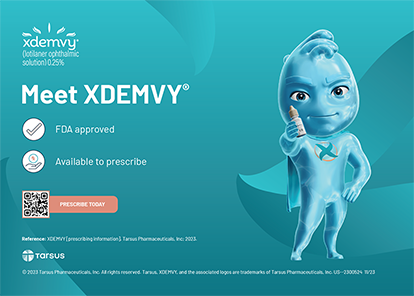
The growth rate of the aging population worldwide, the emergence of digital health, the global movement to value-based medicine, and record venture capital investment will likely produce profound evolution within the ophthalmic marketplace. In 2015, the total investment in biotechnology and life sciences was estimated to be greater than $7 billion—a record year.1 Highly successful initial public offerings in the ophthalmic marketplace included Glaukos, and growth was impressive owing to the adoption of new drugs such as those offered by Regeneron Pharmaceuticals. The excitement of these times has me frequently fielding the following question: “I have some product ideas, too. How can I make these a reality?” This article provides some practical tips on how to protect, prototype, and pinpoint the market opportunity.
PROTECT YOUR IDEA
One of the first things investors will ask is the status of the intellectual property protecting your idea (see Tim’s Quick Tips). Be open and comfortable when speaking to the facts of the matter. Investors are not in the business of stealing ideas. Rather, they are looking to invest in teams that have defendable intellectual property, can execute a plan, and are able to satisfy a clinical need uniquely. I therefore always advise colleagues to file a provisional application for a patent as soon as possible. Doing so essentially time stamps your idea, creates a basic description of it, and buys you, the inventor, 12 months before the nonprovisional application is due. Because the true discovery and patentable design elements typically come from the prototype phase, the provisional application will enable you to roll some of the important design attributes into the formal patent application.
Tim's Quick Tips
No. 1.
File a provisional application for a patent to capture the date of invention. Services like legalzoom.com offer a quick and inexpensive way to create a limited liability corporation, file the application, and assign ownership of the patent to that corporation.
No. 2.
Investors love prototypes. If your tinkering skills are limited, freelance resources are available.1
No. 3.
One way to estimate market opportunity is to understand the quantity of surgical procedures it may support. Navigating the Centers for Medicare & Medicaid Services’ website is as complicated as you might imagine. For some free data, visit go.cms.gov/213mv5, and go to Part B National. For example, you will see that 3,146,453 cataract surgeries (Current Procedural Terminology 66984) were performed in 2014.
1. Johansson A. The 15 best freelance websites to find jobs. Entrepreneur. May 12, 2015. http://www.entrepreneur.com/article/245953. Accessed February 22, 2016.
Ophthalmology is gifted with many inventors, and I recently caught up with one of the field’s most prolific, Mark S. Humayun, MD, PhD. Dr. Humayun is the codirector of the USC Eye Institute and director of the USC Institute for Biomedical Therapeutics. Earlier this year, President Obama presented him with the National Medal of Technology and Innovation. In an email exchange with Dr. Humayun in February 2016, I asked him the first step he advises colleagues to take when they have a product idea. Dr. Humayun responded, “For devices make sure it meets an unmet medical need and then try to reduce it to practice in design or by building a prototype.”
CREATE A PROTOTYPE
Investors love prototypes regardless of their scale. If your idea is a device, buy a glue gun, and make a prototype as soon as possible. Browse Home Depot and a dollar store for materials that you can repurpose and refine to demonstrate the basic functionality of your idea.
To take it one step further, try your prototype within an eye model (porcine or donor is fairly straightforward to obtain). Capture images and simple video of your prototype in action to be included within a PowerPoint presentation (Microsoft). I captured dozens of videos with my smartphone’s camera held at the ocular. Be resourceful. The goal is to gather enough data to portray your concept and convince yourself that it could work.
PINPOINT THE MARKET OPPORTUNITY
When it comes to market analysis, there is only one certainty: you are probably wrong. Think through and document the assumptions behind your market analysis. At this phase, it is important to get buy-in on all your assumptions such as market penetration (X% of cataract surgeries will use this), economics (reimbursement will be $X), pricing, number of physicians, number of patients, etc. If there is strong agreement on and acceptance of your assumptions, investors will easily follow your projections and likely create their own algorithms. You might actually be underselling the opportunity. You do not want a disagreement on market size calculation, so be crystal clear about your assumptions.
CONCLUSION
Doctors are creative thinkers and problem solvers. Thousands of great ideas out there deserve to come to market but never will. Increase your chances by taking the right steps at the outset.
1. PricewaterhouseCoopers, National Venture Capital Association. MoneyTree Report: Q4 2015/full year 2015 summary. Published January 2016. http://bit.ly/1LQNVmn. Accessed February 29, 2016.
Timothy Buckley, MBA, BSME
• vice president, global sales & marketing, Iridex
• cofounder of ophthalmology device incubator Ocunetics in Alamo, California
• (650) 766-5341; timbuckley@calalum.org; Twitter @timothy_buckley


